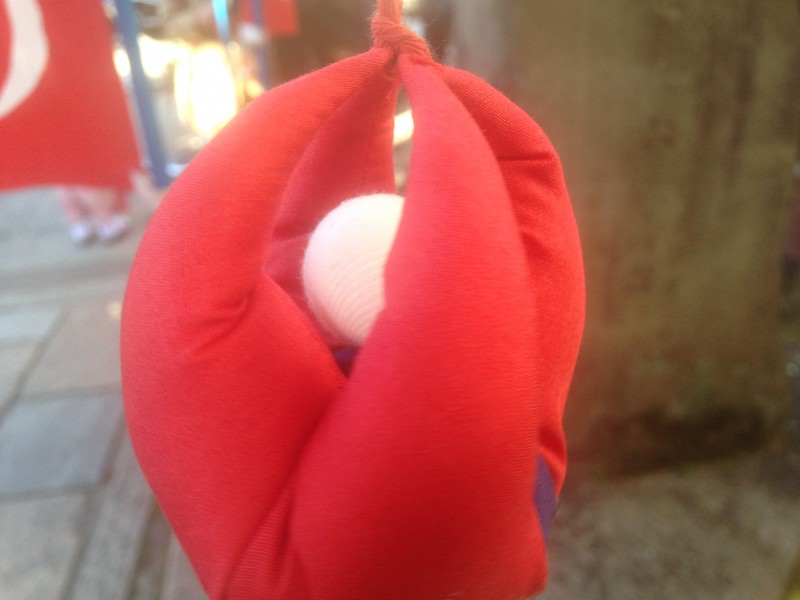
Hanging monkeys at Yasaka Koshindo temple
This being the Year of the Monkey in the Chinese Zodiac, shrines and temples with monkey associations attract a lot of visitors and put on special events. I recently visited one in Kyoto I hadn’t come across before, Yasaka Koshindo, famous for its ‘hanging monkey’ (kukurizaru). It’s basically a small temple compound, dominated by a central hall filled with cloth hangings (see above). These didn’t look like monkeys to me, but the receptionist explained that the monkey was hanging by all four limbs, with its head in the middle.

Four limbs tied up, with the monkey head in the middle
The temple belongs to the very syncretic Koshin faith, which was once a popular folk belief into which oral tradition was mixed with elements from Confucianism, Daoism, Buddhism and Shinto. Apparently it was suppressed in Meiji times as a form of superstition by a modernising regime eager not to look ‘primitive’ to the eyes of the West.
According to the temple leaflet, Koshin-san has an angry face because he abhors bad people and wishes to help them become better. Accordingly those who put their bad desire into the hanging monkey and leave it suspended will be relieved. Whenever a person feels desire coming on, they should remember the angry face of Koshin and control their desire like a hanging monkey whose hands and feet are tied together. In other words, desire can be tied up and ended thanks to the beneficence of Koshin-san.
The temple also features on its incense holder the 3 Monkeys from Nikko who don’t speak, see or hear. They can be seen in front of the Main Hall, in which I attended a gomaki ritual, clearly Shingon in style to judge from the dramatic hand gestures during the sutra chanting. The altar figure was the blue-skinned Shomen Kongo, before whom prayer sticks were ritually burnt, each one bearing the name and age of a worshipper which rose up to the deity on a wave of smoke.
It was the first time for me to come across this once popular sect, but it felt fortuitous given the year. Monkeys feature prominently in Kyoto, since the deity of sacred Mt Hiei is served by monkey messengers and there are several shrines with monkey guardians (see for instance Sarutahiko Jinja). Judging by Yasaka Koshindo, the animal provides inspiration to ‘hang on in there’ during the year ahead!
*****************
To learn all about the religious significance of monkeys in Japan, including Koshin faith, see these pages in Mark Schumacher’s photo dictionary.

Gomaki ritual held in the main hall

Tying up desire and leaving it suspended induces a sense of lightness

Incense holder held up by the Three Monkeys, who are Mizaru (no see), Kikazaru (no hear), and Iwazaru (no speak).
********************
For photos and explanation of a Koshin Shrine in Fukuoka, click here.

Leave a Reply